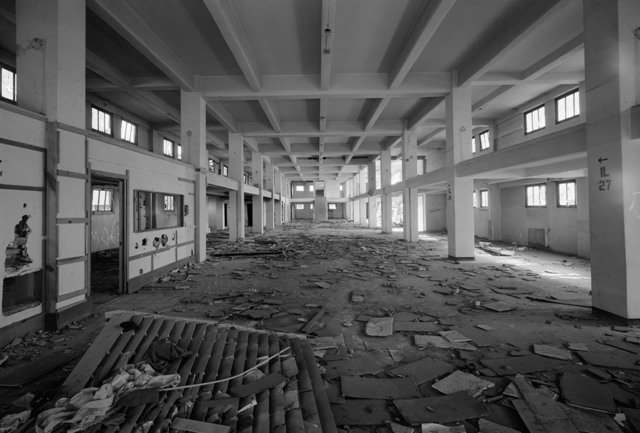
One of the more difficult challenges in K9 training is finding a good training venue and finding different ones so you are not always using the same one. To this day, I still look at vacant buildings, buildings for sale, and open areas often as I drive by as potential training sites for both K9 and SWAT. And, usually, some of the buildings that are most often available are abandoned and empty – and training in these sterile environments can be a reason we get in trouble if we limit our training to these types of environments on a consistent basis.
During initial training with our police dogs, we should be training in sterile environments to acclimate them to searching buildings and rooms. We will place accessible decoys in these rooms initially so it easy for the dog to find them and then progressively increase the difficultly of the search with inaccessible decoys behind doors. We may later use these same environments for remedial training or back-to-basics when necessary. However, in the real world, we know that our search areas are not always empty rooms – they contain obstacles like furniture and clutter. We need to spend the majority of our training time in the environments we most expect to encounter.

If you aren’t frequently training your dog to work and search around obstacles like furniture or other barriers, the dog may stop searching to avoid the obstacles and leave the area – or they may not as thoroughly search for a suspect. The dog needs to learn there could be a suspect hiding around furniture or under it or beyond it.
This training and searching in and around obstacles is not exclusive to the dog – the handler should be experiencing the same challenges with the same obstacles. By doing so, the handler learns to move tactically to clear and progress while also keeping tabs on the police dog and potential threats.
A great training location can often be an abandoned building or building for sale where office furniture has been left behind and can be moved throughout the venue to change the search areas and present different challenges to the K9 teams. And, do not feel forced to train within an environment that is unsafe and possibly presents health risks to you, your dog, and others.
Now, herein lies the other challenge with finding ideal training locations like open businesses (that are preferably closed during your training) and model homes; the likelihood of damaging the premises. So, when you find a good location, you must take the precautions necessary to make sure you leave the premises as you found them – or you might not get access again.

I know the challenges – been there, done that – but I also know the benefit of finding good training locations or creating them. I’ve enjoyed conducting training within some awesome training venues and I’ve survived with doing the best I could with some mediocre locations. If real world locations for your training are minimal or almost non-existent, you should not be discouraged nor abandon attempts to locate and you should solicit support from local businesses and seek to create relations with your local realtors and building contractors.
If you believe you fight like you train, you must also believe that only training in sterile environments might get you in trouble later when it’s time to fight in a real world environment.
Take care, be safe and make every day a training day….
Bill Lewis II
This “reason” was first shared on February 10, 2020.

“Trouble” isn’t always related to incidents or predicaments that directly result in lawsuits, claims or discipline. Often times, our actions or inactions that are missed, deliberately overlooked or downplayed may lead to nothing or can later lead to mistakes or bad incidents with minimal to serious repercussions. A reason we get in trouble can be minor or simple at first glance – or even serious – but a combination of these factors can often have disastrous consequences.
These “reasons” are provided periodically as a collection in-progress based on actual incidents and real attitudes as well as feedback received at HITS, the CNCA Training Institute, and the “Canine Liability 360” classes. As Gordon Graham says, “We haven’t found new ways to get in trouble.” So, as the list progresses, you may or may not read something familiar to you that you have personally experienced or seen others encounter. If you encountered or heard about it, did you learn from it?
